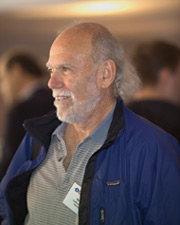Commentary: Barry Barish
|
Progress on the Linear Collider
During the year 2006, there will be many important developments in store for the proposed International Linear Collider. The Global Design Effort will undertake a new set of tasks and goals–primarily focused on producing a Reference Design Report, which will contain cost estimates for the ILC.
The past year saw the recruitment of the GDE team, first by my appointment as director last March, and then by 49 members joining the team for the Snowmass workshop, which was held in August and now feels like it was years ago. At that workshop, the entire GDE team met for the first time to begin the process of reaching our first milestone–defining a baseline configuration for the ILC.
In just a matter of months we achieved our first goal. It wasn’t easy, and it required a lot of hard decisions. But the process worked well, and we succeeded in producing a Baseline Configuration Document (BCD), which was discussed and endorsed in December at the second GDE meeting in Frascati, Italy. The document spells out the basic design and machine parameters of the 20-kilometer-long collider, which will make electrons and positrons collide at the energy of 0.5 TeV.
With that success behind us, this year the GDE will move into its next phase and prepare a Reference Design Report. Using the baseline configuration as a foundation, the Reference Design Report will present the detailed design and cost estimate for the ILC.
To take on this task, we have reorganized and strengthened the team by adding new members to the GDE. Three boards–the Change Control Board (CCB), Design Cost Board (DCB), and the R&D Board (RDB)–are at the center of our new organization, and all report directly to the executive committee and director. (If you measure the activities of the GDE according to the number of acronyms now currently associated with the ILC, there is no question that our now-62-member organization has its hands full.)
The first step in the reference design process will be to initiate the work of our three boards. The Change Control Board, chaired by KEK’s Nobu Toge, now has ownership of the Baseline Configuration Document. This board will fill in missing documentation, fix inconsistencies, and update other items in this document. The board is also developing the procedures to be used for proposing and evaluating suggested changes to the Baseline Configuration Document.
The responsibility of the Design Cost Board, chaired by Fermilab’s Peter Garbincius, is to produce the Reference Design Report. At the Frascati meeting, six new Area System Groups replaced the former Working Groups. Each Area System, or major section of the accelerator, will correspond to a chapter of the Reference Design Report. The Design Cost Board is now setting up procedures and templates for the Area System Groups to use in providing the necessary information for each section of the report.
Finally, the R&D Board is chaired by Bill Willis of Columbia University. This board will be responsible for assessing and providing guidance for the global R&D program in support of the baseline configuration and other ILC related research. It will also provide guidance and priorities for the detector R&D program. This board is evaluating all of the current programs in place, figuring out what the ideal R&D program should be for a global project like the ILC and its baseline configuration.
By the time of our next GDE meeting in Bangalore, India, on March 9-11, 2006, our work on the reference design will be fully underway. At that time the Change Control Board will lock and freeze the Baseline Configuration Document, allowing the Design Cost Board to begin the full costing procedure. The Bangalore meeting will serve as a crucial checkpoint on the design and costing goals, as well as our work toward globally guiding the ILC R&D efforts.
This will be an exciting year, and I fully expect that the GDE team will build on its successful start by providing us with a viable reference design and cost.
Barry Barish is the director of the International Linear Collider Global Design Effort.
Click here to download the pdf version of this article.



